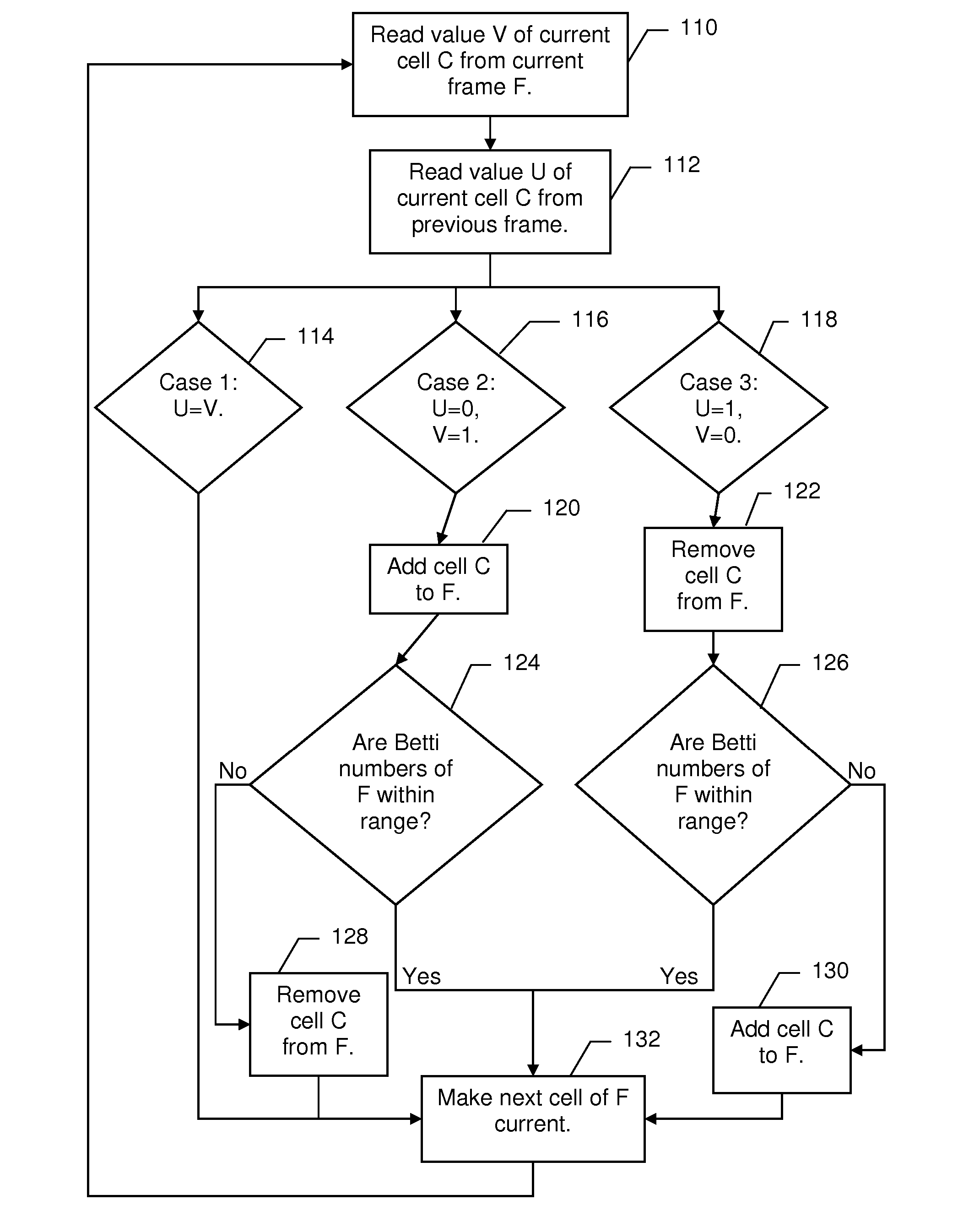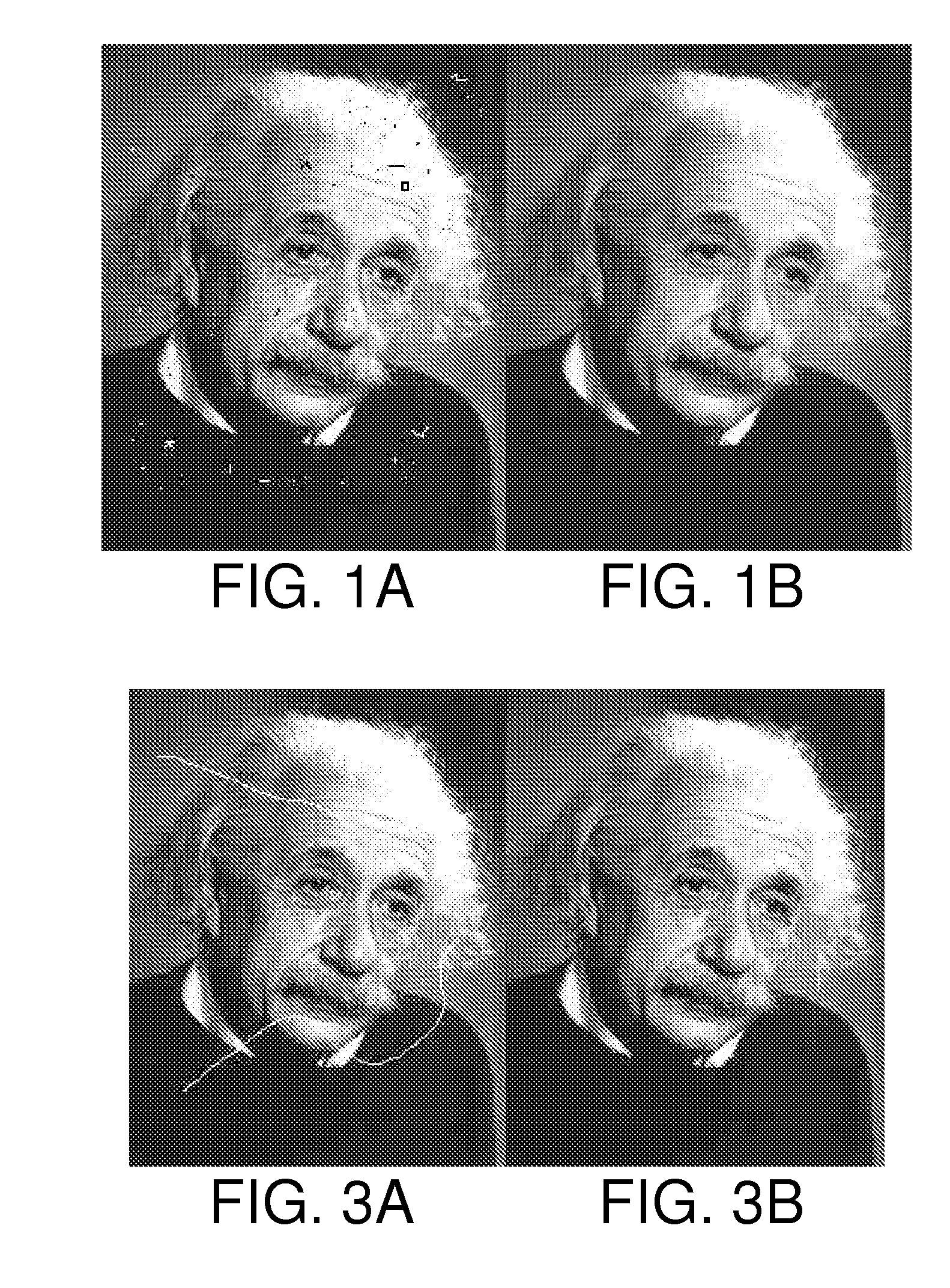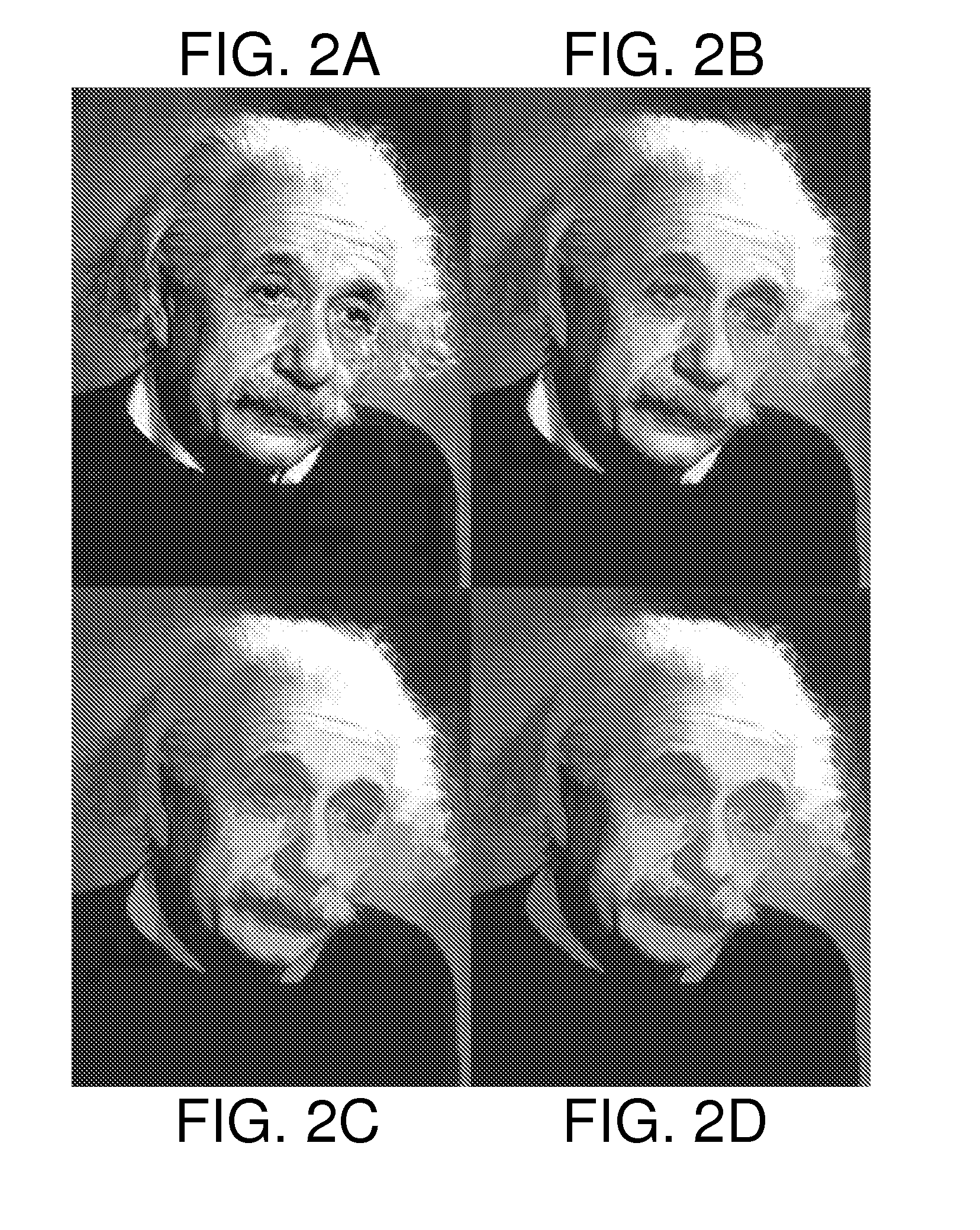Topology-Based Method of Partition, Analysis, and Simplification of Dynamical Images and its Applications
a dynamical image and topology-based technology, applied in the field of computer imaging, can solve the problems of narrow applicability, inability to accept information loss, and inability to use homology theory in the current imaging technology, and achieve the effects of convenient customization, more robustness, and more versatil
- Summary
- Abstract
- Description
- Claims
- Application Information
AI Technical Summary
Benefits of technology
Problems solved by technology
Method used
Image
Examples
first embodiment
[0087]
[0088] Applications of Dynamical Images.
[0089] By a dynamical image, in the first embodiment we understand a sequence of 2D binary (black-and-white) images or 0-and-1 arrays of the same size, which we call frames. Dynamical images can also be called image sequences. The change from a frame to the next is treated as a result of the change of the parameter of the image which is simply the number of the frame. Each homology class of each frame is traced to the next frame and its lifespan is the collection of all frames of the dynamical image that contain this homology class.
[0090] Some examples of dynamical images are the following: (1) Black-and-white movies, where the parameter is time. A dynamical image is also obtained from a still binary image by moving a frame around the image, zooming in / out, tilting, etc, or drawing on it. (2) Gray-scale images, where the parameter is the gray level. Given a threshold T, the corresponding frame contains all the pixels with gray level lo...
second embodiment
[0166]
[0167] The provisional application described the method of the first embodiment applicable to 2-dimensional images with 1 or more parameters. It's single-parameter version was implemented as a C++ program. FIGS. 1-7 have been created by this program. The present description develops the method for images of arbitrary dimension with an arbitrary number of parameters.
[0168] Applications of Dynamical Images.
[0169] By a dynamical image of dimension (m,n), or an (n,m)-image, in the present embodiment we understand an m-dimensional array of n-dimensional objects. Dynamical images are also called image arrays. These objects are aligned, for example, by being subsets of the Euclidean space. Then the objects are black and their complements are white. Then we have an array of binary n-dimensional images which we will call frames. Each homology class of each frame is traced to all adjacent frames and its lifespan is the collection of all frames of the dynamical image that contain this ...
PUM
 Login to View More
Login to View More Abstract
Description
Claims
Application Information
 Login to View More
Login to View More - R&D
- Intellectual Property
- Life Sciences
- Materials
- Tech Scout
- Unparalleled Data Quality
- Higher Quality Content
- 60% Fewer Hallucinations
Browse by: Latest US Patents, China's latest patents, Technical Efficacy Thesaurus, Application Domain, Technology Topic, Popular Technical Reports.
© 2025 PatSnap. All rights reserved.Legal|Privacy policy|Modern Slavery Act Transparency Statement|Sitemap|About US| Contact US: help@patsnap.com



